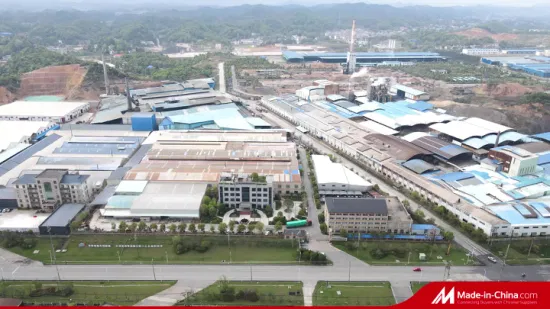
고밀도 알루미나 40X40 셀, 150X150X150mm 벌집형 세라믹 기판
설명
기본 정보
| 모델 번호. | 031725 |
| 운송 패키지 | 나무 팔레트 |
| 사양 | 150x150x300mm |
| 등록 상표 | 케싱 |
| 기원 | 중국 장시성 핑샹 |
| HS 코드 | 6909110000 |
| 생산 능력 | 3, 000, 000 조각/년 |
제품 설명
> 벌집모양 도자기
HTAC 기술(고온 공기 연소)은 새로운 연소 기술의 막대한 에너지 절약 및 환경적 효율성을 제공하며 배기가스 감소, 연소 공정 개선, 열장 평탄화 및 열 전달 증가를 가능하게 하는 신뢰할 수 있고 업계에서 입증된 연소 방법으로 간주됩니다. 고온 에너지 집약적 응용 분야에서.
벌집 세라믹 열회수 매체는 철 및 강철, 기계, 건축 자재, 석유 화학, 비철 금속 제련 및 기타 산업, 용광로, 열기로, 열처리로, 분해로, 베이킹에 널리 사용되는 재생 버너의 핵심 구성 요소입니다. , 뜨거운 용광로, 석유 및 가스 보일러 및 용광로의 용해로. 이 기술은 반전 장치를 사용하여 두 개의 세라믹 미디어 베드를 교대로 흡열 발열되게 만드는 것입니다. 가장 일반적인 응용 분야로는 RTO(RCO), 금속 주조 연소기, 금속 용해 산업로 등이 있습니다. RTO에서 전통적으로 사용되어 온 다른 세라믹 매체와 비교됩니다. 벌집형 모노리스의 장점은 더 큰 열 효율과 열 교환기 베드 전체의 더 낮은 압력 강하를 포함합니다. 열 효율이 증가하고 압력 강하가 낮아지면 일반적으로 장비 설계가 더 작아지고 자본 비용이 낮아지며 운영 비용이 낮아집니다. 허니컴 세라믹은 상당한 에너지 절약을 위한 팬 부하 감소(직선 채널로 인한 낮은 압력 강하), 적은 부피, 얇은 벽 두께, 더 빠른 열 교환을 위한 보다 효율적인 대안으로 사용됩니다. 무게가 가벼우므로 구조적 지지가 덜 필요합니다. 무엇보다도 비표면적이 크다는 것은 작은 부피를 차지하는 컨버터에서 변환 효율이 높다는 것을 의미합니다. 이러한 모든 이점, 특히 더 넓은 비표면적 덕분에 벌집형 세라믹은 산업 전반에 걸쳐 더 나은 성능을 제공하는 매체가 됩니다.
> 벌집형 세라믹 모노리스, 기판, 배플 벽돌, 축열 볼 및 새들
기존 연소 기술과 비교하여 당사의 친환경 에너지 절약형 고온 공기 연소(HTAC) 시스템은 연료 흡입량을 20%~50% 줄일 수 있습니다. 산화 연소가 20% 감소하고 NOx 배출이 40% 이상 감소하여 생산성도 향상됩니다. 허니컴 세라믹 재생기는 단위 부피당 높은 열 교환, 빠른 열 전달, 작은 공기 흐름 저항, 작은 열 침투 깊이 및 높은 열 효율이라는 장점을 가지고 있습니다. 당사의 전기주조 크롬 커런덤은 2000°C 이상에서 합성되어 고품질 벌집형 세라믹 재생기, 배플 벽돌 및 축열 볼을 생산합니다. 이는 하중 하에서 높은 내화도, 슬래그 및 충격 저항성, 빠른 열 전달 등의 장점을 제공합니다. 이 제품은 또한 우수한 내오염성, 무거운 부피 중량 및 큰 열용량 능력을 갖추고 있습니다. 당사의 기술은 또한 블로킹, 용융, 슬래깅, 균열 또는 박리와 같은 일반적인 문제를 해결하여 더 긴 서비스 수명을 제공합니다. 또한, 당사의 촉매 연소는 600C에서 추가된 촉매와 CO 및 HC 화합물 사이에서 발생하여 폐열 회수를 더욱 향상시키고 오염 가스의 배출을 줄입니다.
MaterialsbrAlumina CeramicsbrAlumina Ceramics is the most widely used advanced ceramic material. Owing to its highly strong ionic inter-atomic bonding, alumina offers good performance in terms of chemical and thermal stability, relatively good strength, thermal and electrical insulation characteristics at a reasonable price. With a range of purities and also the relatively low cost in raw material production it is possible to utilize alumina for wide ranging applications across a variety of different industries.brMullite Ceramics Alumina brMullite occurs very rarely in nature because it only forms at high temperature, low pressure conditions, so as an industrial mineral, mullite has to be supplied by synthetic alternatives. Mullite is a strong candidate material for advanced ceramics in industrial process for its favourable thermal and mechanica properties: low thermal expansion, low thermal conductivity, excellent creep resistance, suitable high temperature strength and outstanding stability under harsh chemical environments.brDense Alumina & Dense CordieritebrLow water absorbtion (0-5%)High density, High heat capacityLarge specific surface area, greater thermal efficiencyStrong anti-acid, anti-silicon, anti-salt. Low block rateSilicon Carbide CeramicsbrSilicon carbide is notable for its hardness, high melting-point and high thermal conductivity. It can retains its strength at temperature as high as 1400 °C and offers excellent wear resistance and thermal shock resistance. It has well-established and wide-spread industrial applications as catalyst supports and hot-gas or molten metal filters because of its low thermal-expansion coefficient and good thermal-shock resistance as well as excellent mechanical and chemical stability at elevated temperature environments.brCordierite CeramicsbrCordierite has a superior thermal shock resistance due to their intrinsic low coefficient of thermal expansion (CET), coupled with relatively high refractoriness and high chemical stability. Therefore, it is often used as high temperature industrial applications, such as: heat exchangers for gas turbine engines; honeycomb-shaped catalyst carriers in automobile exhaust system.brZirconia Oxide Ceramics CorundumbrCeramics Zirconia can be an ideal material of high-strength and high-toughness when proper compositions, such as: magnesium oxide (MgO), yttrium oxide, (Y2O3), or calcium oxide (CaO), are added to control an otherwise destructive phase transformation.The micro structural features of zirconia ceramics also make it an engineering material choice of wear and corrosion resistance, damage and degradation tolerance in a wide range of applications.brCorundum Ceramics br1, high purity: Al2O3> 99%, good chemical resistancebr2, temperature resistance, long-term use at 1600 °C, 1800 °C short-termbr3, thermal shock resistance and good resistance to crackbr4, slip casting, high density, high purity aluminabr>
당사 연락처


![[Qisong] 산업용 정수시스템용 사각 금속 벌집형 기판](/uploads/s/d9d577e2dcef453d8b6922c4cec2ee44.webp)

![[Qisong] 중국 자동차 부품 촉매 변환기용 벌집형 금속 단일체 기판](/uploads/s/9e057ff538af400eae4ea4d1475c380f.webp)

![[치송] 자동차용 금속 벌집 기판](/uploads/s/54d8cbce014f4bbcb51928ca6a7d68a8.webp)